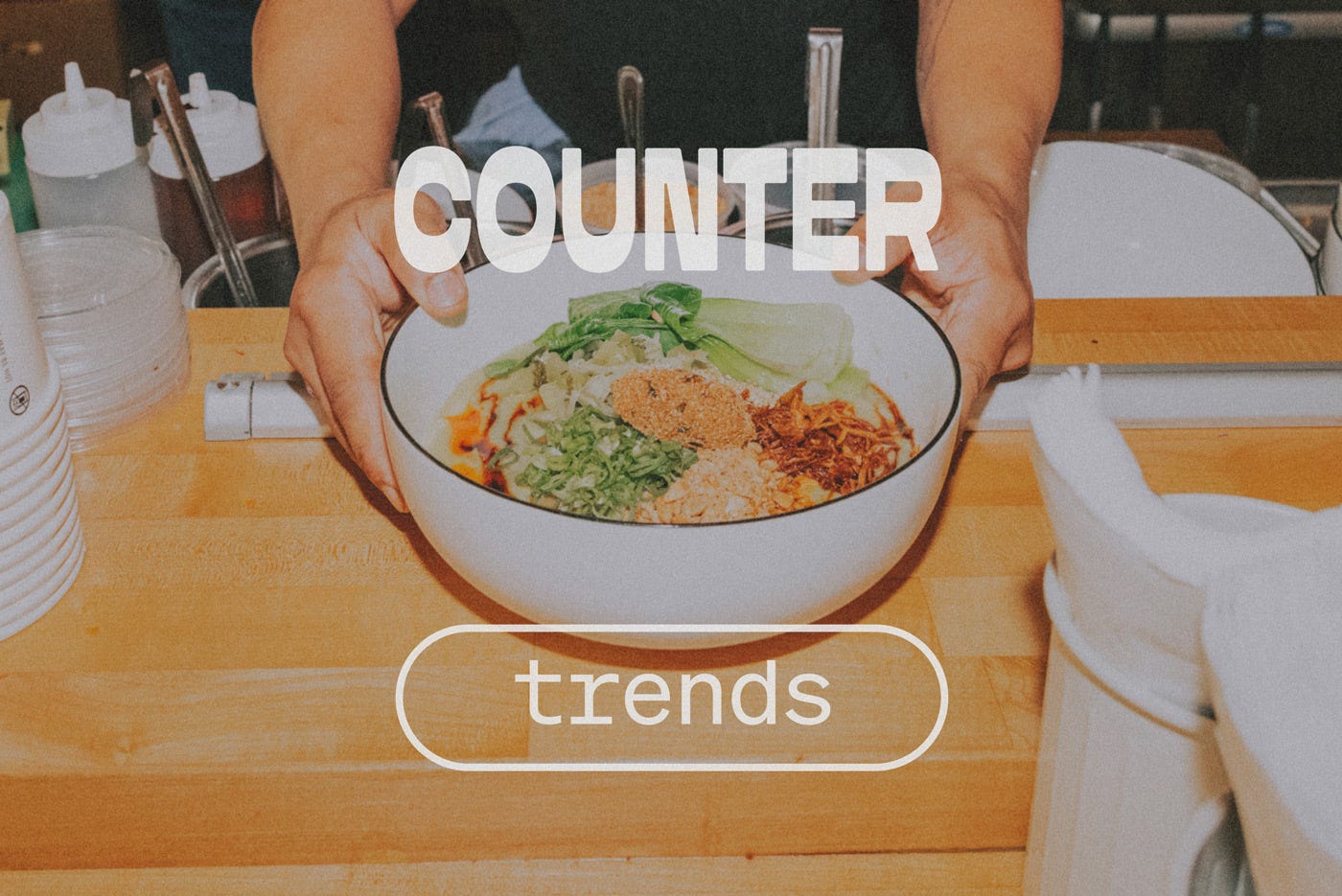Counter Trends
Unearthing great ideas, appropriate risks, and best practices at successful local restaurants
This look at the future of hospitality is sponsored by Square.
Here’s a surprising statistic: Three-quarters of restaurant operators spend more time on operations than they did a year ago, according to survey data in the Square 2025 Future of Restaurants report. That’s a remarkable stat in an industry with no shortage of tech solutions angling to help operators streamline operations and save time.
So what gives? Turns out operators still face a delicate dance between optimizing the business and providing great hospitality. Luckily, it’s possible to do both.
I recently spent some time reporting on behalf of Square, talking to operators and unearthing ideas, trends, and unexpected realities of running a restaurant in 2025. It’s been five years since the pandemic pulled the rug from underneath all of us, sending local businesses — especially restaurants — into a tailspin. The future looks clearer now, but running a viable independent restaurant requires a lot of intentional choices and commitment to a vision. It’s a challenge!
We turned my findings into a series called Counter Trends, available to read in full on The Bottom Line. The series highlights emerging trends driven by local businesses, how they’ve sparked success stories, and what others can learn from them.
1. Operators get excited about unlocking new potential with tech. We love to see it.
Entrepreneurs don’t open their first restaurant — or in this example, a fleet of food carts — because they enjoy untangling tricky tech challenges. But that comes with the territory. Magnus McKeller, the owner of Jamrock Jerk, comprised of six mobile food carts, added digital ordering before Covid. Now, almost half of the business’s orders come through digital channels, including touch-screen kiosks. Recently, Jamrock Jerk added a digital kitchen display system, which eliminated the need for an employee to run paper tickets between the register and the kitchen. That’s just one example of how tech helped the business improve — there are others.
But mostly McKellar is thrilled to be able to thrive in a competitive New York City restaurant scene. The carts have always been busy, a point he’s obviously proud to share. But digitizing the ordering let his staff take a breath and focus on serving guests.
Read more: The New Rules of Digital Ordering
2. There’s no time to dwell on mistakes.
You’d *think* it would be easy to pull a list of regrets out of seasoned operators, but it was not! Each time I asked an operator to recall a mistake they’d advise others to avoid, they paused to think before offering a small tweak or suggestion. But no operator framed a so-called mistake as a bad decision. Instead, they described small missteps that eventually led to something bigger and better: straying too far from an original vision, or hesitating before taking a risky leap in the name of growth.
Or, as Danielle Murcia, owner of Crepes Bonaparte in Southern California, said, “I don’t feel like it was a mistake, because we learned from it.”
Read more: Learn from Our Mistakes: Three Restaurant Owners on What They’d Do Differently
3. When you have a hit, you have a hit. Own it!
I love a restaurant with a point of view. It helps when that point of view encourages value, offers amazing food in hospitality, and becomes a family-friendly neighborhood favorite. MAMA Oakland is all of those things, and during a conversation with Ryan Cole, CEO and partner at Hi Neighbor Hospitality — MAMA’s owner — I realized how much thought had gone into creating a restaurant that feels… great.
MAMA is fully booked most (if not all) nights of the week, offering a three-course meal for $39.95 per person. There are plenty of add-ons — a $44 steak, for example — and a solid wine list featuring bottles at a range of price points. Every element of the experience feels intentional, designed to offer guests the kind of value that makes them want to return.
In fact, It’s been a winning formula for so long that MAMA hasn’t had to adjust its pricing, even as food and labor costs increased.
“It blows most people's minds,” he said. “People in the industry don't understand how the $39 menu is even possible.”
Read more: Become an Instant Classic: Three Tips from MAMA Oakland
Thanks to Square for sponsoring this coverage, supporting my deep dives into the top challenges (and wins!) for local restaurants. Read more about these and other trends in my series Counter Trends, published on The Bottom Line.




